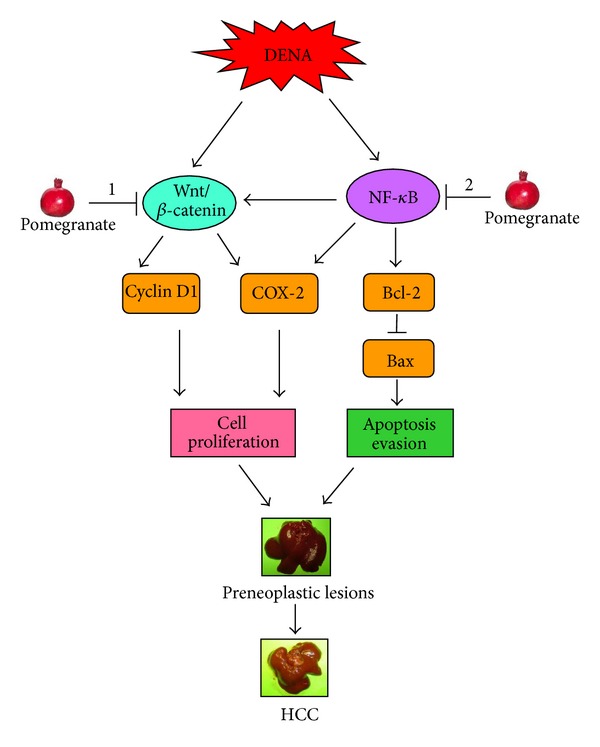Figure 7.

Schematic representation of the possible molecular mechanisms of pomegranate-mediated chemoprevention of experimental hepatocarcinogenesis in rats. COX-2: cyclooxygenase-2; DENA: diethylnitrosamine; HCC: hepatocellular carcinoma; NF-κB: nuclear factor-κB. DENA simultaneously activates Wnt/β-catenin and NF-κB signaling pathways, which in turn, result in an elevated expression of target genes, including cyclin D1, COX-2, and Bcl-2 and reduced expression of Bax. All these features contribute to accelerated hepatocyte proliferation and evasion of apoptosis, which results in development of preneoplastic lesions and subsequently HCC. Pomegranate phytochemicals block interconnected Wnt/β-catenin and NF-κB signaling pathways, which lead to antiproliferative and proapoptotic effects contributing to chemoprevention of HCC. ↓: Activation and ⊥: downregulation. 1 and 2 indicate results of this study and that from [35], respectively.
